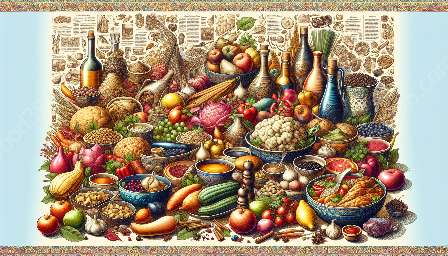Introduction:
Natural topography has a significant influence on the dietary habits and food choices of people living in mountainous regions. The geographical features of mountainous areas impact the availability of food resources, agricultural practices, and the overall food culture of the inhabitants. This article delves into the influence of geography on food culture, the origin and evolution of food culture, and specifically how natural topography shapes the dietary habits of those living in mountainous regions.
Geographical Influence on Food Culture:
The geographical layout of mountainous regions greatly affects the types of food available to the inhabitants. The elevation and terrain make it challenging to cultivate certain crops and promote the growth of specific agricultural products. Moreover, mountainous areas often have diverse microclimates, leading to a variety of flora and fauna that can be used as sources of food and nutrition.
Furthermore, the isolation and limited accessibility of mountainous regions have historically led to the development of unique culinary practices and food preservation techniques to sustain the local population throughout the year.
Origin and Evolution of Food Culture:
The origin and evolution of food culture in mountainous regions are closely linked to the adaptations made by the inhabitants to utilize the available natural resources. Over time, traditional recipes, cooking methods, and dietary patterns have emerged as a result of the need to thrive in challenging environmental conditions.
Additionally, the trade routes and interactions with neighboring lowland areas have contributed to the diversification of food culture in mountainous regions, as new ingredients and culinary practices were exchanged and integrated into local traditions.
Natural Topography and Dietary Habits:
Availability of Local Produce: The natural topography of mountainous regions significantly influences the availability of local produce. The altitude and soil composition determine which crops can be grown effectively in these areas. As a result, the dietary habits of people living in mountainous regions are heavily reliant on locally sourced fruits, vegetables, and grains that thrive in such conditions. Additionally, wild foraging for mushrooms, berries, and herbs is often an integral part of the mountainous dietary culture.
Impact on Protein Sources: The terrain in mountainous regions limits the grazing grounds for livestock, shaping the protein sources in the diet. As a result, people in these regions often rely on alternative protein sources such as game meat, fish from mountain rivers and lakes, as well as traditional dairy products derived from mountain-dwelling animals.
Culinary Styles and Cooking Methods: The geographical constraints have led to the development of specific culinary styles and cooking methods in mountainous regions. Preservation techniques like drying, smoking, and pickling are employed to extend the shelf life of food items, and hearty, warming dishes are prevalent due to the cold climate and strenuous physical activities often associated with living in elevated areas.
Conclusion:
The influence of natural topography on the dietary habits and food choices of people living in mountainous regions is profound and multi-faceted. It shapes not only the availability of food resources but also the cultural identity and culinary practices of the inhabitants. Understanding this influence aids in appreciating the rich diversity and resilience of food cultures around the world.


